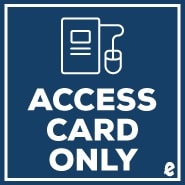MyLab Math Standalone Access Card to accompany Briggs/Cochran/Gillett, Calculus: Early Transcendentals with Integrated Review, 3/e
This item is an access card for MyLab™ Math. This physical access card includes an access code for your MyLab Math course. In order to access the online course you will also need a Course ID, provided by your instructor.
This title-specific access card provides access to the Briggs/Cochran/Gillett, Calculus: Early Transcendentals with Integrated Review, 3/e accompanying MyLab course ONLY.
0135243394 / 9780135243398 MYLAB MATH WITH PEARSON ETEXT -- STUDENT ACCESS CARD -- FOR CALCULUS: EARLY TRANSCENDENTALS WITH INTEGRATED REVIEW, 3/e
MyLab Math is the world’s leading online tutorial, and assessment program designed to help you learn and succeed in your mathematics course. MyLab Math online courses are created to accompany one of Pearson’s best-selling math textbooks. Every MyLab Math course includes a complete, interactive eText. Learn more about MyLab Math.
ALERT:
Before you purchase, check with your instructor or review your course syllabus to ensure that you select the correct ISBN.
Used or rental books
If you rent or purchase a used book with an access code, the access code may have been redeemed previously and you may have to purchase a new access code.
Access codes
Access codes that are purchased from sellers other than Pearson carry a higher risk of being either the wrong ISBN or a previously redeemed code. Check with the seller prior to purchase.











